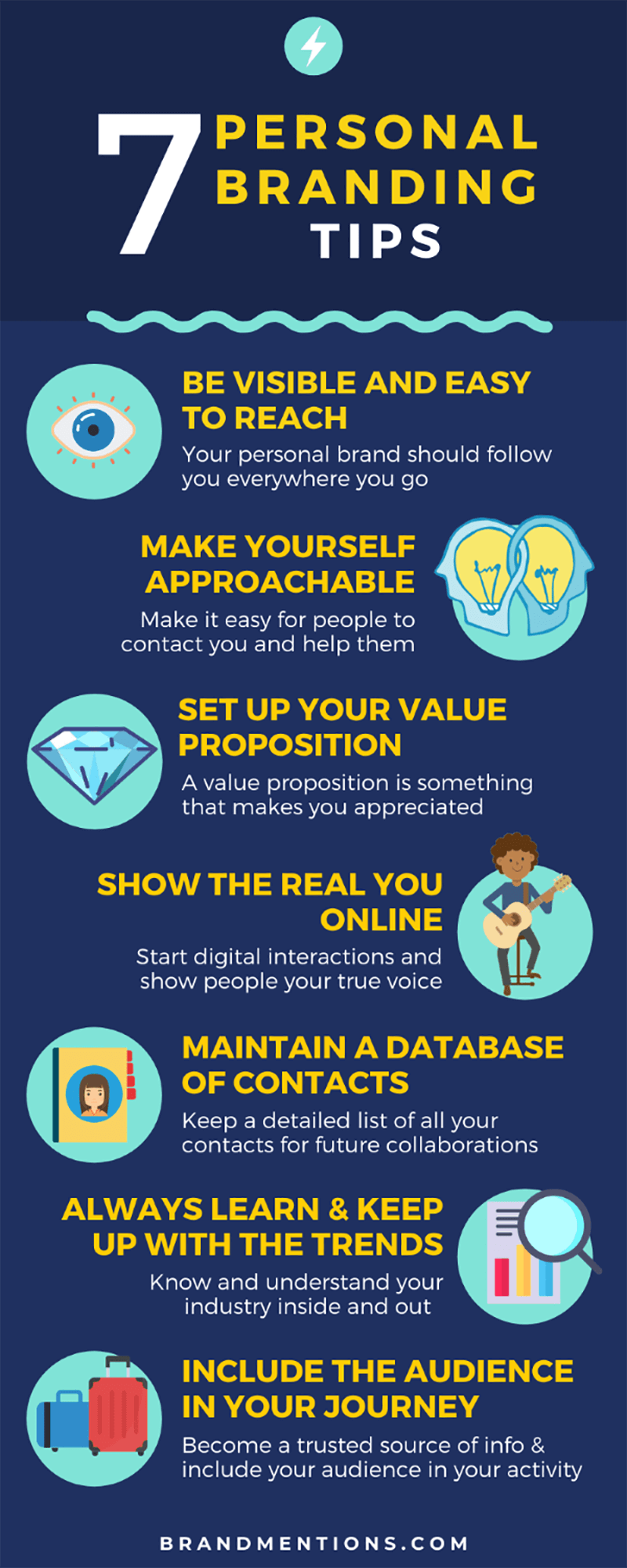Whether by choice or circumstances, many of us are taking charge of our own professional destinies by going the freelancing route. Being your own boss involves hard work and long hours, but it allows you to map out the future on your own terms.
Freelancing also involves more than just hanging out a digital shingle and waiting for the clients to come calling.You have to plan carefully and devise a strategy that sets you apart from the competition. In short, you need to create a unified, recognizable brand and become a relentless brand advocate. We’ll provide some actionable tips to help you do just that.
What is branding and why is it important?
What comes to mind when you think of names like Nike, Apple, or Tide detergent? Chances are, it’s a color scheme, logo, tagline, or even a jingle that sticks in your head. With the most successful businesses, it’s a combination of all of these factors.
That’s the art of brand building. When done right, your company will be the first that comes to mind whenever consumers are looking for a particular product. Your brand image is also what lends an air of authority in your field, establishes trust, and helps forge lasting relationships with loyal customers.
Branding involves more than just creating a professional logo, sending bulk email solicitations, or putting a website together. In addition to providing you with a sense of purpose and a framework for success, effective branding:
- Tells consumers at as glance who you are and how you’ll address their pain points
- Creates an emotional link between your brand identity and the buyer persona
- Instantly ties your story to the customer’s journey
- Transforms leads into loyal customers
- Nurtures customer relationships
- Instills consumer confidence
All of these goals are essential when building your online presence and growing your business.

Simple ways to build your personal brand
In order to create a lasting brand, everything from pricing your freelance services to the colors and fonts you choose for your website should be competitive, consistent, and cohesive. Brand building is not as hard as it sounds if you have patience and a plan.
Here are some simple ways you can create a personal brand that stands the test of time:
1. Solidify and unify your messaging
Who are you, both personally and as a business leader? Your corporate mission, values, and vision for the future are part and parcel of who you are as a brand and how you want to be regarded by industry peers and the public at-large.
Things like defining your mission and value propositions should have already been done when your business was in the planning phase. Now, you need to tie these strategies and ideals to your brand image and make sure prospective clients know who you are.
Start by thinking of one or two words that you would use to describe your business. Do you want to be associated with speed and efficiency? Compassion and personalization? Competence and industry expertise? Look for words, images, colour schemes, and other elements that encapsulate the vision and emotions you want to project, and use those as the basis for your brand identity.

2. Define your target audience
This goes beyond just targeting a certain demographic or casting a wide net to catch generic leads. In order to build a brand that targets a sustainable audience, you need to create an ideal persona of customers who will identify with your brand identity. Once you know who you’re targeting, you can segment leads and tailor messaging to add a more personal touch.
3. Narrow your focus
Go even further and calibrate your brand to reach the person who influences the person behind the persona. Think of a car salesperson, for example. Sales associates are directed to target their pitch to the person who makes the buying decision, even if that person was not the one actually buying the car.
For instance, if you were selling a car to a student, you would identify some features that a teen would like but direct the real pitch to the parent by emphasizing things like safety and gas mileage. If you’re selling a family car, you would try to determine which family member is most invested in the purchase and what functionality they want.
4. Create a professional web presence
Even if you still have a brick-and-mortar location, establishing a dependable, professional web presence is essential. You can make your web presence engaging and interactive by creating a profile on industry-related sites, guest-posting and backlinking, blogging, and engaging on social media.
What’s more, your own website should be user-friendly and SEO-optimized, which means you’ll need the right platform to get it designed and launched. There are plenty of DIY options on the market, but few of us have the time and design expertise needed to create a professional, functional, and secure website without some help.
According to web developer Gary Stevens of Hosting Canada, website builders provide the simplest and most efficient option for getting a professional looking website built quickly.
“Website builders used to be thought of as a last resort for those who didn’t know how to write code or hadn’t the patience to learn a CMS,” says Stevens. “More people are starting to realize they can have a professional looking site in a fraction of the time and at a modest cost by going the builder route.”
5. Master the art of forging relationships
Even though you want to stand apart from the competition, that doesn’t mean you should isolate yourself from the professional world. Networking and creating professional alliances are an essential part of brand-building. Not only does this allow you to promote brand authority, but you’ll increase your chances of exposing your brand to a wider audience of qualified leads.
This is done through activities like joining professional associations, guest posting on websites for related products, collaborating with other freelancers, and becoming active on social media.For example, a snack company will double their exposure by creating promotions with a business that markets soft drinks or another product that goes well with snack foods.

6. Guard your reputation
Your online presence is worth very little if you don’t take care of your reputation. Make sure that your brand identity is consistent and positive across all of your platforms. Become active and engaging on social media, and establish relationships with satisfied customers or influencers who can act as trustworthy brand ambassadors for your freelance business.
You can also hire a monitoring service who will look for all mentions of your brand online. This will allow you to acknowledge positive engagement and proactively manage any negative issues, such as bad reviews or customer complaints. These should be dealt with immediately, publicly, and as professionally as possible.
7. Be consistent
Like most things in business, branding is not a one-and-done activity. It’s something that should be authentic and consistent throughout the lifecycle of your brand. Test various elements to determine what approaches and branding activities work best. Encourage customer feedback and reviews, and leverage favorable interactions to help further establish your brand.
Conclusion
In order to become a prosperous freelancer, you and your brand must become one in the same. This is how you shape your identity as a company and show your followers what you have to offer. Use these low-cost and practical tips to build the foundation for sustainable, long-term success.


































